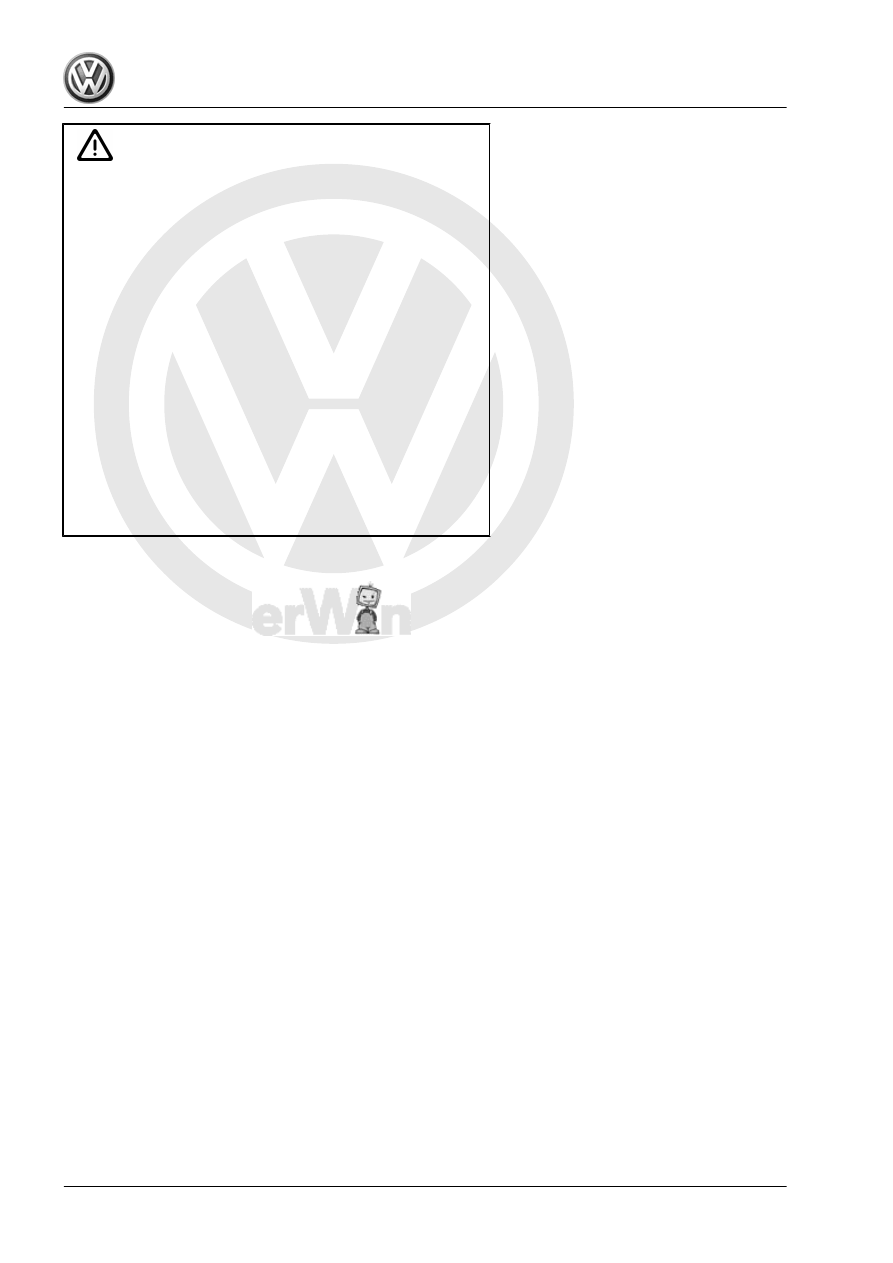Volkswagen Golf / Golf GTI / Golf Variant. Manual - part 340

Caution
♦ Always note the correct installation position and only in‐
stall in the component location intended in the door.
♦ Protect the crash sensor from impact. Do not use a crash
sensor if it has fallen on the floor. When doing body work
on the door, the crash sensor should be removed.
♦ The crash sensor is calibrated to the volume of air inside
the door. If the door is deformed resulting in a reduced air
space inside the door, the function of the crash sensor will
be affected.
♦ Avoid contaminating the crash sensor. Do not use com‐
pressed air in the area surrounding the crash sensor.
Protect crash sensor from filings or shavings (for example,
when installing door speakers later). Do not use cavity
sealant or spray lubricant in the area of the crash sensor.
♦ Protect against heat and cold. Avoid heating, for example
when painting or doing other body work. Crash sensors
should not be subjected to temperatures below -40 °C (for
example, in non-climate-controlled airplane cargo holds).
♦ Protect the crash sensor from moisture when storing or
installing it.
For proper crash sensor function, effective door seal must be en‐
sured after installation. Note the following points:
♦ All components (for example, cover, speaker, door trim panel)
must be installed correctly.
♦ The door trim panel clips seal the system. If necessary, re‐
place the clips.